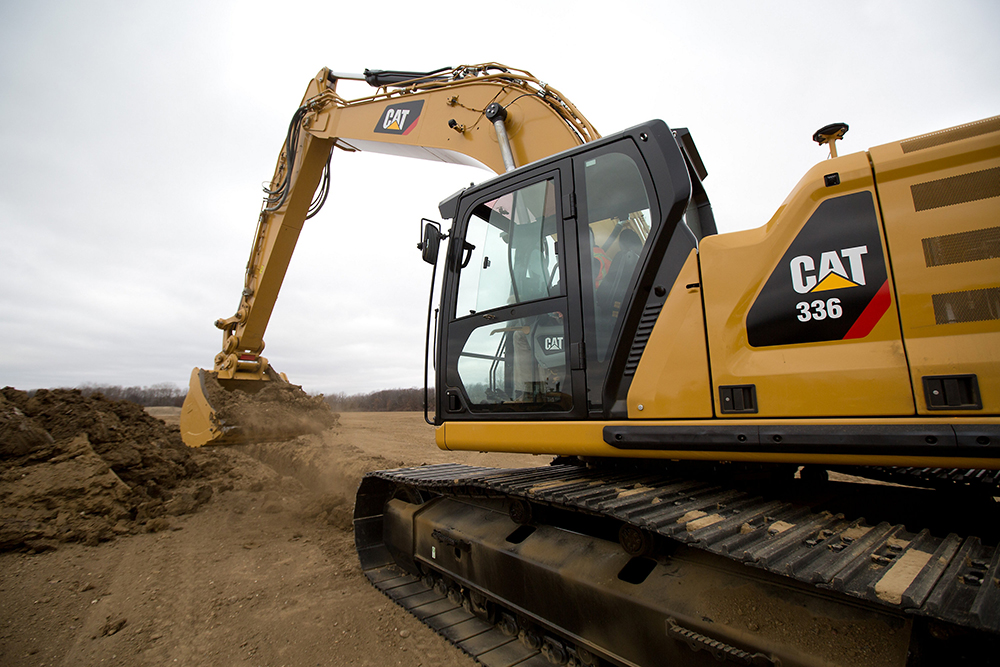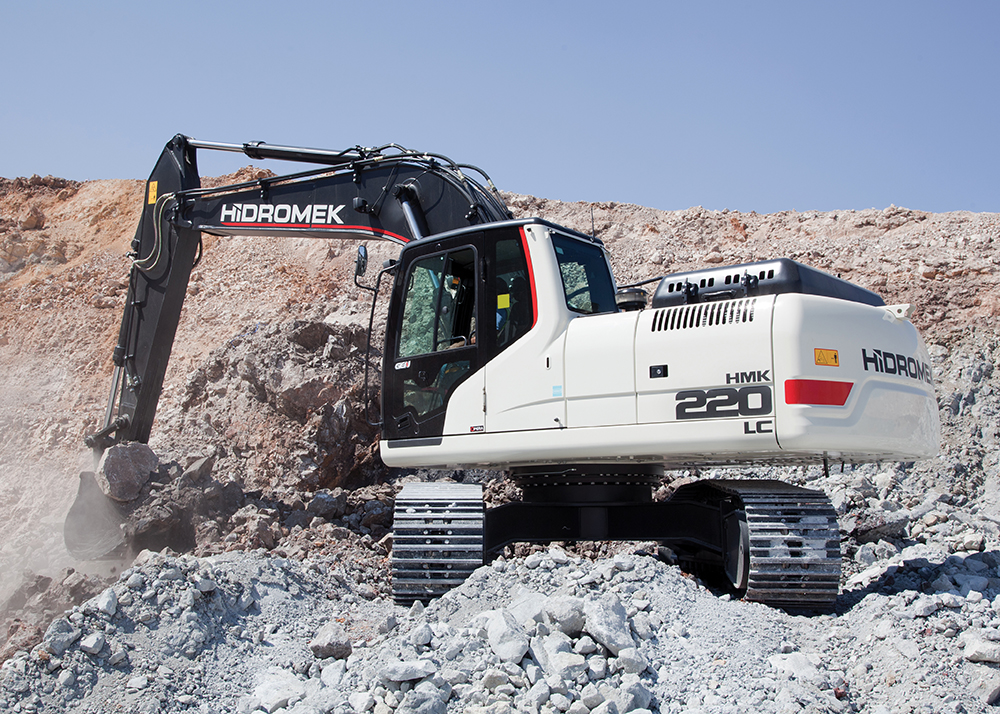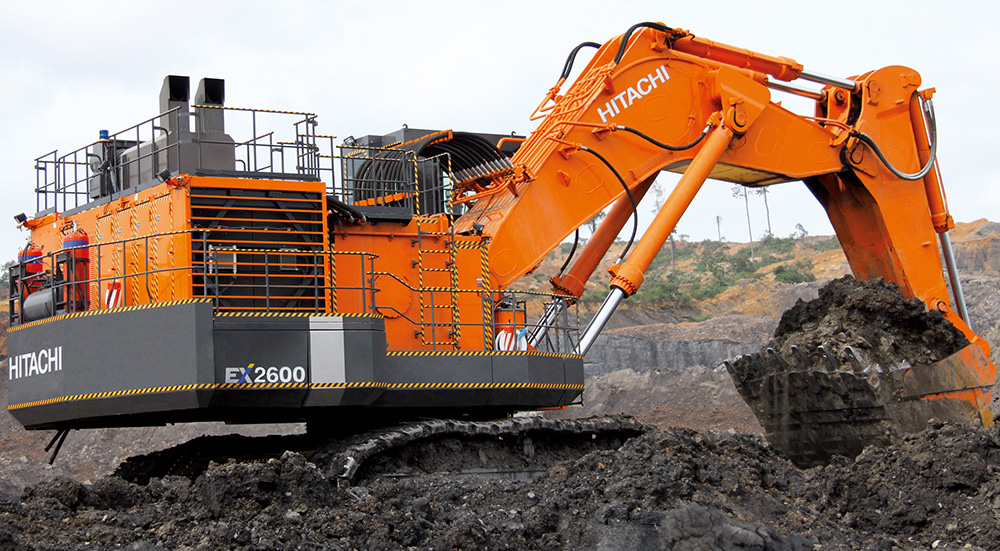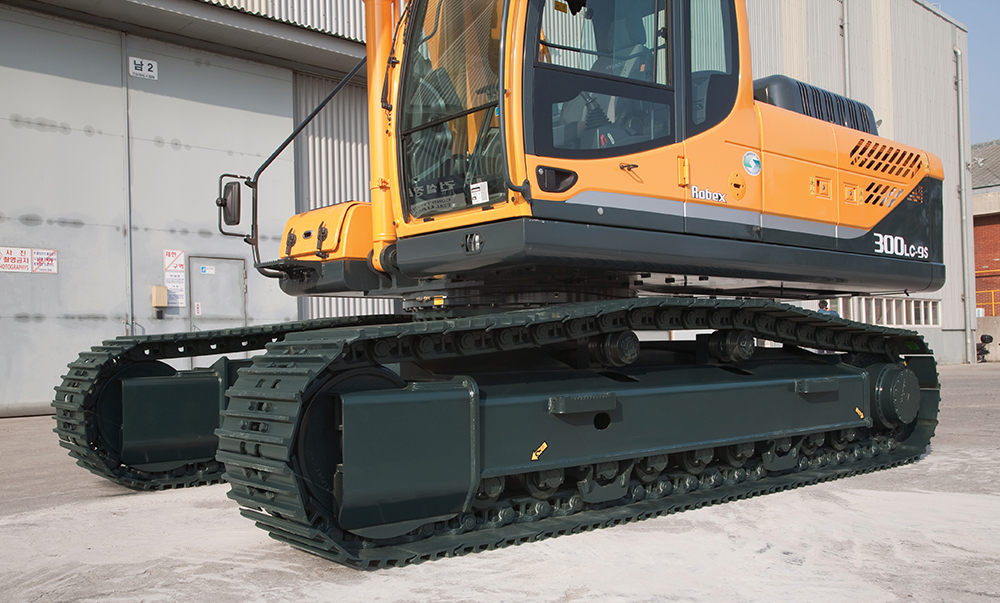
The undercarriage of a crawler excavator comprises many moving components that need to be maintained for it to function properly. Regular maintenance, coupled with correct machine operation, significantly reduces undercarriage wear, improves operating efficiency and reduces running costs. Håkan Karlsson, product manager for ground engaging tools, undercarriage and customer solutions at Volvo CE Sales Region EMEA, says a properly maintained undercarriage is important to the overall life of the machine. Wear parts in poor condition will shorten the machine’s service life and increase the risk of breakdowns and unplanned downtime.
Shumani Tshifularo, MD of HPE Africa, the Hyundai and McCloskey distributor in South Africa, says because crawler excavators have a strong, solid-steel construction, maintenance of the undercarriage is often neglected and that can be a costly mistake. “Research shows that repair costs for the undercarriage of a tracked excavator account for as much as half of all repair costs over the life of the machine. A worn undercarriage increases vibration levels of the excavator, which reduces service life of components like pumps, motors, electronics and the engine,” says Tshifularo.

The same view is shared by Garth Labuschagne, sales manager Africa for the Mining Mobile Plant division at Bradken, a Hitachi Construction Machinery company, who reasons that for many operations, the undercarriage is within the top 10 spend items during the life of an excavator. “A poorly maintained undercarriage will require a significant amount of time and money spent on it, which translates into reduced efficiency,” says Labuschagne.
There are several indicators that the undercarriage is not getting enough attention. According to Labuschagne, typical indicators of a poorly maintained undercarriage include stretch in the track (which indicates pin wear), reduced component life, unusual wear patterns and increased failure rates such as roller surface delamination/compression.
Some of the indicators of a poorly maintained undercarriage, according to Lionel Hearne, national service manager at Wacker Neuson South Africa, include tracks slipping or sliding off, tracks screeching loudly and not moving due to damaged sprockets, tensioners or support rollers.
So, what does a proper maintenance regime of a crawler excavator undercarriage entail? There are several things that should be kept in check, given that the undercarriage comes with several moving components. Tim Nenne, senior undercarriage application specialist at Caterpillar, says one of the key parameters is to keep the tracks properly tensioned.
“A tight track is one of the top reasons for reduced life and failures in an undercarriage. This is especially true for the greased lubricated tracks on excavators. Tight tracks increase the internal wear rate by pushing the grease from the joint more quickly,” says Nenne.
Karlsson advises that track tension should be checked at least once a week to prevent early wear. Track tension should always be a little slack; if the tension on the track is too tight, the pressure can cause unnecessary wear to the chain and sprockets. “This can happen if the distance from the bottom chain to the frame on the undercarriage has been measured incorrectly. It’s a different measurement depending on the type of material, so anyone carrying out the inspection should always check the operator’s manual,” says Karlsson.

Tshifularo believes that track tension should be inspected daily. “This takes no more than 10 minutes,” he says. “A track tension that is too tight puts extra load on the engine, which wastes fuel and can also cause premature undercarriage wear. A track that is too loose may come off and can also cause additional shock loads and side-to-side wear of components.”
When it comes to correct track tension, Vaughan Ellis, MD of Maximum Equipment, the South African distributor of Hidromek excavators and backhoe loaders, says the rule of thumb is to maintain the width of a hand between the bottom roller and the track, which is about a 12cm gap.
Apart from the track tension, Karlsson believes it’s also crucial to keep in mind that when one replaces any part in the track system, such as a chain, they also have to check the wear on other parts. For example, a worn sprocket may quickly wear down a new chain.
Ellis says leaving the undercarriage dirty for too long is a costly mistake. “Not washing the undercarriage is detrimental to its overall health. If you have been working in clay or muddy conditions, don’t leave the mud stuck to the undercarriage for too long. The mud sits in the pins, bushes and rollers and causes them to wear excessively,” says Ellis.
Nenne shares the same sentiment, saying that material build-up in the undercarriage system and on the roller frame can lead to tight track conditions. Such a build-up also increases wear rates as the links drag over it and it circulates through the link/roller system.
Tshifularo adds that packed debris and dry material should be removed from the undercarriage at the end of every shift, using a shovel, steel bar or water. Dry material increases track tension and prevents rollers from turning freely, which accelerates wear of components.
He also recommends that after every 1,000 hours of operation, a specialist undercarriage company should be commissioned to check the undercarriage. Excessive wear on one component causes accelerated wear on other components in the system.

Tshifularo says it’s also important to look at several other parameters, like total hours of travelling vs digging and total hours travelled in high-speed vs low-speed mode. “Torque setting on all the bolts on the undercarriage should also be checked – including roller and top idler brackets, track shoes, sprockets and final drives,” says Tshifularo.
Besides maintenance, operator technique is one of the most important factors in the health of an undercarriage. Ellis believes one can tell the difference between a good and bad operator by the undercarriage. “A bad operator thinks the undercarriage is designed to track over anything, including rocks and stockpiles. This is a common scenario in quarries,” says Ellis.
Commenting on the impact of machine operation to overall undercarriage health, Karlsson says operators should always travel and dig with the sprockets at the rear and the idlers at the front. “The idler has springs to protect it from pressure, but operating with it at the back will cause around 30% more wear on the sprocket and chain,” he says.
Tshifularo advises that operators should avoid travelling long distances in high-speed mode. The faster the travel speed, the greater the relative load between components, which increases wear. Over long distances, friction causes heat build-up within the rollers, idlers and drives and this can damage internal seals.
In fact, Nenne says there is a need to limit tramming (walking the machine). Any moving of the machine contributes to the wear on the undercarriage. “Keeping the amount of unproductive movement to a minimum will reduce the amount of wear per hour of machine operation. It is advisable that an excavator should not tram more than 15% of its total operating time,” he says.
Tshifularo adds that operators should also avoid digging or excavating with the boom over the sprocket. The overhead dig/dump cycle causes stress and wear at the point of sprocket/bushing contact over the sprocket. These forces should be over the idler, where minimal chain-rail wear occurs.

Tshifularo also advises that operators should work up and down a slope rather than along a gradient or slope. Working along a gradient tilts the machine to one side, which increases the load/stress on the lower track and this accelerates overall wear on this track.
“It is also important to balance slew direction under load. Because the dig-slew-dump cycle puts pivot stress on the undercarriage on the dump side of the machine, the operator should balance the slew direction by turning the excavator around in the middle of the shift,” says Tshifularo.
Tshifularo adds that operators should try to reduce pivot/counter rotation turns on hard ground. Excavators are useful on restricted work areas because they are able to make pivot turns, but the operator should try to make wider turns to prevent grouser corner wear.
In conclusion, Karlsson says when using a hydraulic breaker, the idlers should always be at the rear. “Hydraulic breakers cause a different kind of pressure, so operators should always keep the sprocket at the front and the idler at the back to avoid unnecessary wear to the sprocket, chain and gear box,” concludes Karlsson.








